Five years and 400 proposed rules later, many of the provisions in the Dodd-Frank Act’s 850-pages are yet to be finalized. Considering the many regulatory and legal changes in the housing industry over the past 30 years, this protracted implementation is not uncommon. Over this same period of time, one piece of legislation remains largely unchanged and critically important to the housing industry. Enacted in 1977, the Community Reinvestment Act (CRA) sought to address redlining: discriminatory credit practices toward individuals in low to moderate income neighborhoods. Given the penalties for non-compliance, banks that accept FDIC insured funds remain vigilant in ensuring their business practices serve the communities from which they receive deposits.
As ubiquitous as CRA is with lending practices, it is frequently misunderstood. In the midst of the financial crisis, headlines questioned whether CRA was at fault for the financial meltdown. Others believe it is a lending quota for minorities. Of course, none of that is true. CRA evaluates banks on critical factors such as lending, investments and services and was intended to encourage banks to meet the credit needs of their entire community. A neighborhood of limited means needs access to more resources than just what their residents currently can make available themselves. Though related in some regards, CRA is not Fair Lending. The Fair Housing Act (FHA) and Equal Credit Opportunity Act (ECOA) protect consumers by prohibiting unfair and discriminatory practices whereas CRA is primarily focused on laws to encourage lending to low and moderate income borrowers and communities. As straight forward as the law sounds, it can be difficult for banks to achieve positive ratings, and there are serious consequences if they don’t achieve at least a Satisfactory Rating. In fact, anything less than a Satisfactory Rating precludes a bank from engaging in any merger and acquisition activity.
Because the law is often misunderstood and the implications are significant if not properly executed, it is critically important to have a solid plan. A strong CRA strategy demonstrates to examiners that you take the responsibility seriously. Operating with this approach additionally benefits your intuition by ensuring you meet the intended spirit of the law while serving the community in which you operate.
Following are ten steps for a successful Community Reinvestment Act Plan:
1. Understand the Goals
The goals are complex and vary by market. Have a clear understanding of the performance evaluation criteria for lending, investment and services. You should know how your institution will be evaluated in order to prepare for the exam. There are many resources depending on the size of the bank:
Small institutions https://www.ffiec.gov/cra/examinations.htm
Large institutions http://www.occ.gov/news-issuances/bulletins/2014/bulletin-2014-16a.pdf
2. Understand your company’s core strategic initiative
A common misstep of CRA directors and bank managers is to separate the CRA strategy from the core business strategy. CRA emphasis on serving the needs of the community must be consistent with safe and sound operation of the institution. You can have a stronger CRA strategy by aligning it with the bank’s overall business strategy.
3. Understand and collect assessment area characteristics
The CRA exam contains quantitative and qualitative elements. The quantitative part assesses your performance based purely on numerical data. The qualitative portion is vital in establishing context for your quantitative performance. Understanding socio economic factors such as average income, home prices, unemployment rates, etc. can help you paint a picture for the regulator about what has transpired in the assessment area, and how those factors have made it easier or more difficult for you to achieve the goals.
4. Align critical staff to sales
Often, CRA positions are held in a compliance department. While CRA roles should be aligned with compliance, to effect real gains on loan originations in LMI communities or with LMI borrowers, sales needs to be directly involved. A good approach is to have the compliance position work in conjunction with sales or to have a sales position that works directly with compliance. Ultimately, loan originations can only be done through loan mortgage originators.
5. Brake down goals to align with sales territorys
Once you have the sales alignment, make sure you break down the assessment area goals by manager or division or however else your organization divides its territory. Each manager, line staff and operations personnel member should know what the goals are for their respective region, and how they contribute to them.
6. Be specific in your “ask” of sales partners
Goals are great but instructing your team how to achieve the goals is even more important. FAQs, sales presentations and other tools are important to provide your team members. The more comfortable they feel, the more they will talk about it and maintain focus on achieving those goals.
7. Monitor progress on a regular basis
CRA exams are complicated because the goals are based on past HMDA performance, so you are comparing actual current performance against prior market performance. Even so, it is important to demonstrate to your team how they are progressing against the goals that have been assigned to them. Scorecards, including monthly and quarterly acknowledgement are important feedback.
8. Have a strong CRA exam writer
Don’t wait until the CRA exam period closes to start writing your story. Have a working draft ready at all times for your critical markets. Documenting data, news articles, and success stories while that information is fresh will minimize the risk of forgetting important details.
9. Have a strong CRA exam presenter
The first day of the CRA exam is often referred to as “opening day”. This is when senior bank executives and management welcome the regulator and his/her staff for the commencement of the exam. Make sure you have a great speaker on behalf of your bank who can describe the many things you are doing to serve the community. This is a time to be proud of accomplishments and a time to clearly articulate any challenges. You want to put your best foot forward and sometimes the person who can do this on opening day is not the person who writes the exam.
10. Do the Right Thing
At the end of the day, an institution that does the right thing to serve the entire community will not find it hard to achieve its goals. Checking a box for the sake of moving on to the next flavor of the day won’t cut it. Those LMI borrowers of today, can be the jumbo loan of tomorrow. Truly understanding the purpose behind CRA and how it can help not only underserved (but qualified) borrowers is good business and it is doing the right thing.






